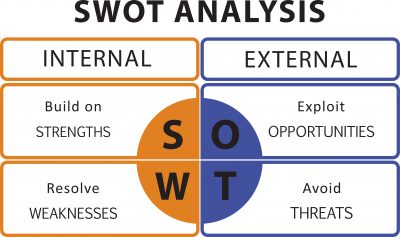Strategic business planning during the COVID‑19 pandemic can feel hard, oppressive, or even downright impossible.
This pressure is exactly why business owners must have a plan now to make informed decisions about their futures. The ag economy has always been susceptible to frequent change, but the COVID-19 pandemic has made strategic planning more important than ever.
A strategic plan is a written document used to focus a small business’ plans for the future. The plan summarizes business goals and clarifies why they’re important. The strategic planning process also helps small businesses pinpoint the areas in which they need to improve to operate at their fullest potential.
Put simply, the process of strategic planning is the blueprint for building small business success.
While the undertaking may sound overwhelming, the strategic planning process can actually be simple and effective as you reduce planning steps to manageable questions that will clarify goals without dedicating excessive time to the planning process.
Take an afternoon and answer the following questions about your business, or give your Wyoming Small Business Development Center (SBDC) Network adviser a call and set up a consultation appointment. Go to www.wyomingsbdc.org/contact for contact information.
Step 1. Identify your competitive advantages.
What makes your business unique? How is it different? What makes your products or services better than those of your competitors?
Step 2. Establish your business’ mission.
What is the purpose or reason for your business’ existence? What does your business stand for?
Step 3. Develop your vision.
What do you want your business to achieve in the future? What kind of community/social impact do you want it to have?
Step 4. Develop goals.
State your long‑term, broad‑based goals and objectives. Your local Wyoming SBDC Network adviser can help with multiple strategies for creating, measuring, and adapting these goals.
Step 5. Conduct a SWOT analysis.
SWOT is an acronym for Strengths, Weaknesses, Opportunities, and Threats. A SWOT analysis lays out the areas of your business that can be improved and areas that are strong. A SWOT analysis helps identify opportunities for growth and pinpoint threats. Each of these four areas should be reviewed by answering a set of relevant questions developed for each.
Strengths – What do you do really well? What makes you better than your competitors? Do you have a strong customer base?
Weaknesses – What’s not working? What processes need improving? Are you making enough profit?
Opportunities – What is the market missing? What external changes will bring opportunities? What are the current trends and will they affect you in a positive manner?
Threats – What are the negative aspects in the current market? What is threatening your business: customer trends, economic trends, technology trends?

Step 6. Measure performance
Develop detailed interim objectives and specific performance indicators (this can be monetary; after all, you’re in business to make a living!) to measure those objectives along with a schedule of detailed action items that need completed to achieve them.
Help is Available With Strategic Planning for Small Business
Strategic planning for small business doesn’t have to be difficult and time‑consuming. At its most basic—as this example shows—strategic planning is a SWOT analysis that has been operationalized for maximum profit. It is a tool that can be used to plan for the long‑term and execute for the short‑term, even during uncertain times. Its use is absolutely essential if a small business wants to produce better outcomes, develop more realistic operating guidelines, and minimize risks.
Steen Stovall is the regional business adviser for the Wyoming SBDC Network in Niobrara County and can be contacted at (307) 234‑6683 or at sstovall@uwyo.edu.





